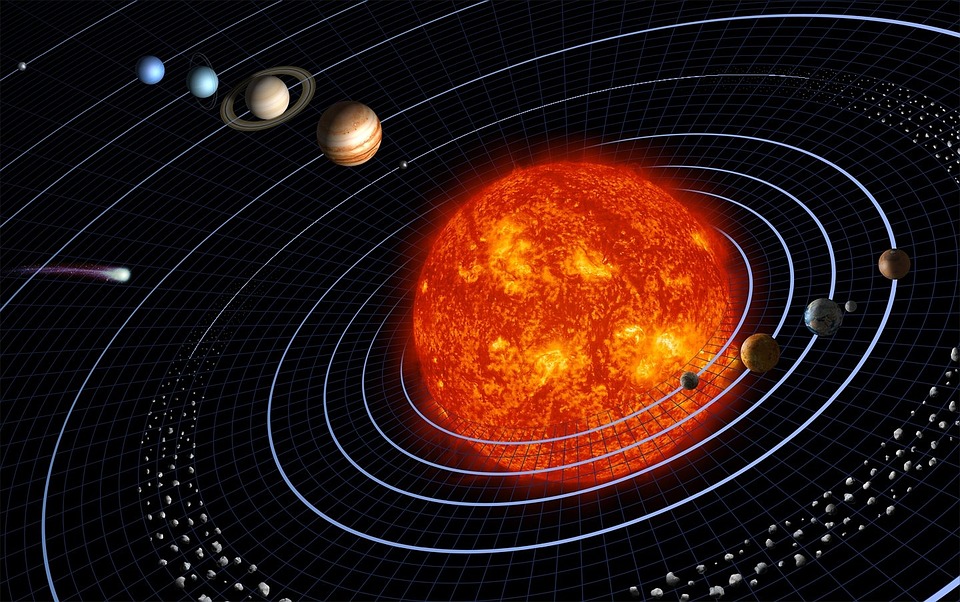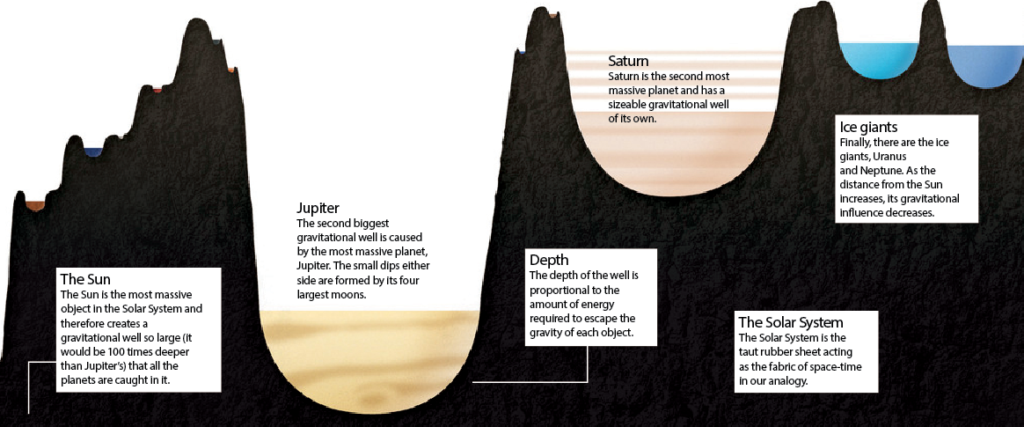The Solar System: What is a gravitational well?
by Scott Dutfield · 31/07/2019

How this invisible force shapes the universe
While we are all familiar with gravity being the force that causes a dropped phone to clatter to the ground, Albert Einstein was the first to describe gravity as what happens when space is warped around a mass, creating a dip called a gravitational well. To better understand this, think of a large rubber sheet, held taut. The sheet acts as an analogy for space-time. Then take a bowling ball – which will act as a planet in our example – and place it on the rubber sheet. The sheet will dip and bend with the mass of the ball, forming a concave shape – the gravity well.
Now put a marble on the sheet, which represents a smaller object in space such as a comet or an asteroid. It creates its own gravity well, but it’s much smaller than that of the bowling ball. If the marble gets anywhere near the larger gravitational well, it will roll into it – seemingly ‘pulled’ by gravity.
Everything with mass is able to bend space and the more massive an object is, the more it bends. An object can only escape a gravitational well if it is moving fast enough. Moons and satellites that orbit planets, for example, do not fall any further into the gravitational well of the planet they orbit.
The Solar System’s gravitational wells
The inner planets – Mercury, Venus, Earth and Mars – all create their own little wells.
This article was originally published in How It Works issue 81 written by Gemma Lavender
For more science and technology articles, pick up the latest copy of How It Works from all good retailers or from our website now. If you have a tablet or smartphone, you can also download the digital version onto your iOS or Android device. To make sure you never miss an issue of How It Works magazine, subscribe today!






